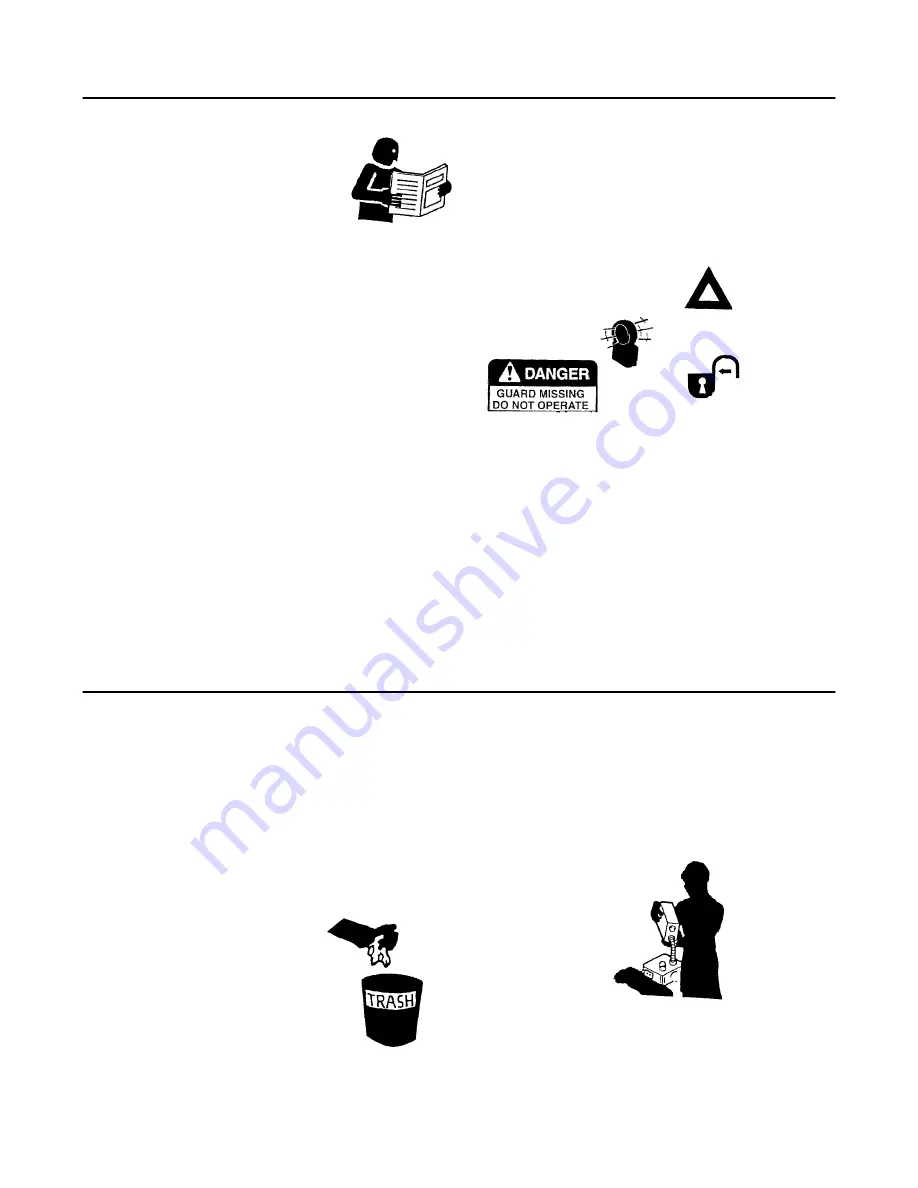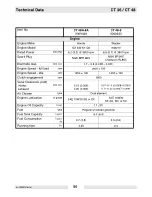
LEARN TO BE SAFE
• Read the operator’s
manual. If one has not
been provided, get one and
study it before operating
the equipment.
• Learn the location and
understand the functions of
all controls before
attempting to operate the
equipment.
• Know the meaning of all identification symbols on
the controls and gauges.
• Check to determine that the manufacturer’s
furnished safety warning labels are securely
attached to the trowel and all warnings can
clearly read. Replace labels and decals if they
are missing or become worn or unreadable.
• Know the location and type of emergency shut-
down control the trowel is equipped with.
• Never start or operate the trowel without
protective guards and panels in place.
• Know the capabilities and limitations of the
trowel.
SAFETY DEVICES
Know what safety devices your trowel is equipped
with … and see that each item is securely in place
and in operating condition.
For example:
• Emergency stop switch or other “Shut-Down”
devices
• Guards, Shields & Panels
• Alarms or Warning Lamps
• Drain Covers, Plugs, and Caps
• Pressure Relief Devices
• Lights
7
PREPARE FOR SAFE OPERATION
Trowel.qxd 11/24/04 10:18 AM Page 7
PRE-OPERATIONAL CHECKS
Walk around the trowel. Carefully inspect for
evidence of physical damage, such as cracks,
bends, or deformation of plates and welds. Check
for loose, broken or missing parts on the trowel,
including brackets, vibration isolators, nuts and
bolts. Hardware should be replaced with original
equipment manufacturer’s (OEM) parts, and should
be properly tightened to the manufacturer’s
recommendations.
Remove all trash and debris from the trowel. Make
sure oily rags, leaves, or other flammable material
are removed and not stored on the trowel. Avoid
potential fire hazards!
Clean all oil or grease
from operator areas such
as control handles, foot
pedals, or platforms to
prevent slipping.
Check for fuel, oil, and
hydraulic fluid leaks. All
leaks must be corrected
before the trowel is
operated.
Inspect all hydraulic hoses for cracks or signs of
wear and replace if necessary. Secure all caps and
filler plugs for all systems.
Always use a a flashlight or shielded trouble light
when checking for leaks – never use an open
flame. Never check for hydraulic leaks with your
hand. Hydraulic systems are under high pressure
and leaks in these systems can penetrate the skin
which can result in serious injury or even death.
Always use a piece of cardboard or wood when
looking for hydraulic leaks.
Be sure the trowel is
properly lubricated. See
that the fuel, lubricating oil,
coolant and hydraulic
reservoirs are filled to the
proper levels with the
correct fluids according to
the manufacturer’s
instructions and
recommendations.
8
PREPARE FOR SAFE OPERATION
Trowel.qxd 11/24/04 10:18 AM Page 8
Summary of Contents for CT 36
Page 1: ...Trowel CT 36 CT 48 OPERATOR S MANUAL 0159226en 005 0408 0 1 5 9 2 2 6 E N...
Page 2: ......
Page 10: ...Safety Information CT 36 CT 48 wc_si000139gb fm 10 2 5 Label Locations...
Page 19: ...CT 36 CT 48 Operation wc_tx000373gb fm 19 wc_gr001758 f g h j k m...
Page 43: ...CT 36 CT 48 Maintenance wc_tx000374gb fm 43...
Page 54: ......
Page 55: ......
Page 68: ...AEM_ConcretePowerTrowel qxd 7 23 03 6 31 AM Page 1...



























